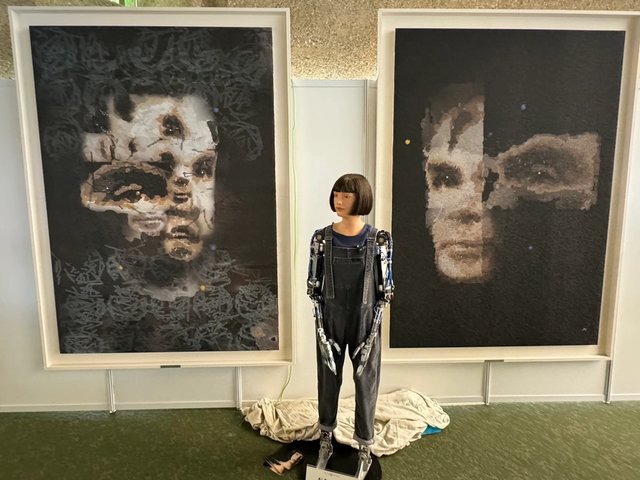Artists as diverse as Rachel Whiteread, Oscar Murillo and Yayoi Kusama are beginning to use the high-tech fabrication methods once available to only the most commercially successful artists such as Jeff Koons.
Lower-cost robots that mimic an artist’s arm movements and joints are starting to replace the pricey computer-numerical-control (CNC) machines that Koons uses to produce his sleek, industrial aesthetic.
“The paradigm has changed,” says Konstantinos Papalexiou, the owner of the Brooklyn-based fabrication studio Neo Set Design, which has recently produced work for artists including Whiteread, Murillo and Kusama using a pair of $80,000 robots from the German manufacturer Kuka. A traditional CNC machine costs more than $250,000.
The robots, commonly used in the car industry, are becoming more affordable, agile and accurate than ever, Papalexiou says. “You cannot give a CNC machine a paintbrush, [but] you can teach a robot to use one very easily,” he says. Robots have “opened up many creative channels in artists’ minds”.
As a classical figurative sculptor, the New York artist Elliott Arkin had never considered using robotic technology. But last year he wanted to make a tenfoot-tall statue of Pablo Picasso pushing a lawnmower, a larger version of a figure he showed at the Musée d’Art Moderne et d’Art Contemporain in Nice in 2014. He was wary of creating work with an overly “manufactured” look, he says, but knew the sculpture would take years to carve by hand. So he decided to use a combination of scanning, computer-based sculpting and milling with the help of robots. “The computer actually gives me a flexibility to change portions of the piece and adjust structures on a large scale more easily,” he says. “It gives me a feeling closer to sculpting in clay on a smaller scale.”
Artists are using digital sculpting technologies much more frequently now, says Mark Rossi, the founder of the Los Angeles-based fabrication company Handmade. He oversaw the 3D scanning, and subsequent sculpting with modelling software, of the artist Charles Ray’s eight-foot-tall fibreglass figure Boy With Frog (2009). “There are things that can be made and actions performed that do not have hand-work analogues,” he says. But, for now, only “a very small handful of artists have made work directly incorporating robots”.
Arkin, however, is a convert. He says he cannot wait to employ Papalexiou’s robots again: “I call one Michelangelo and the other Carpeaux.”


